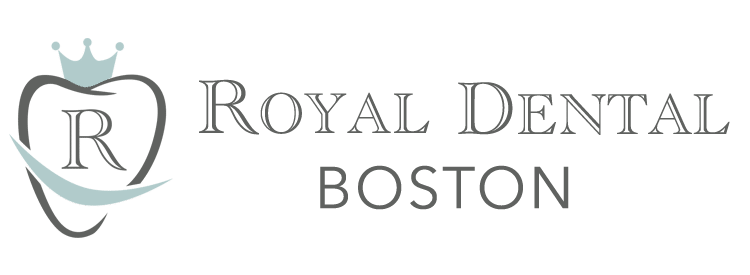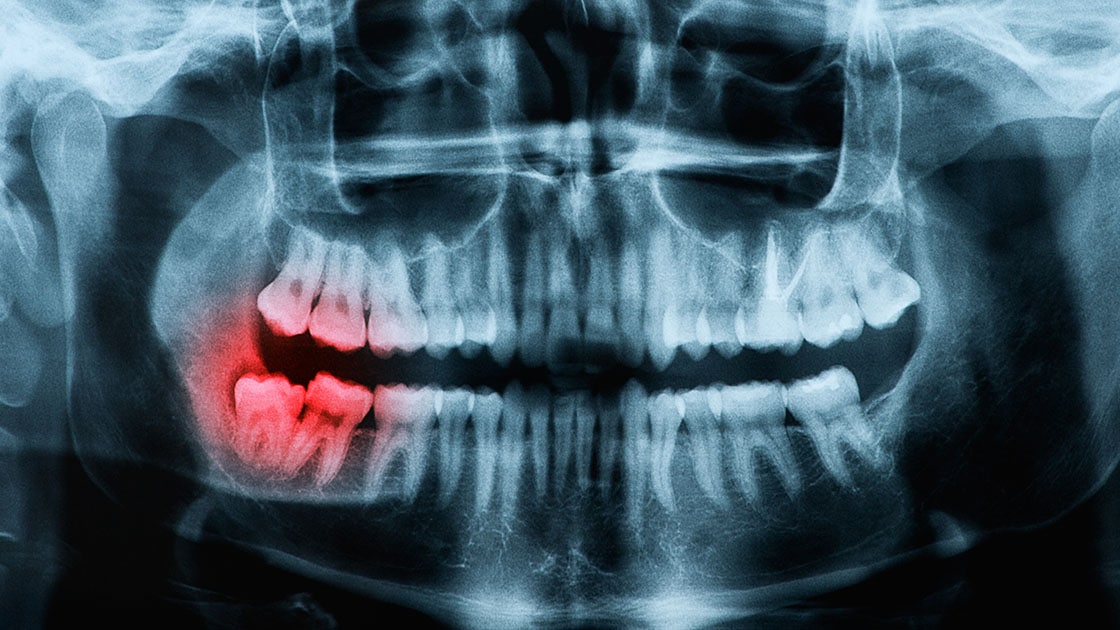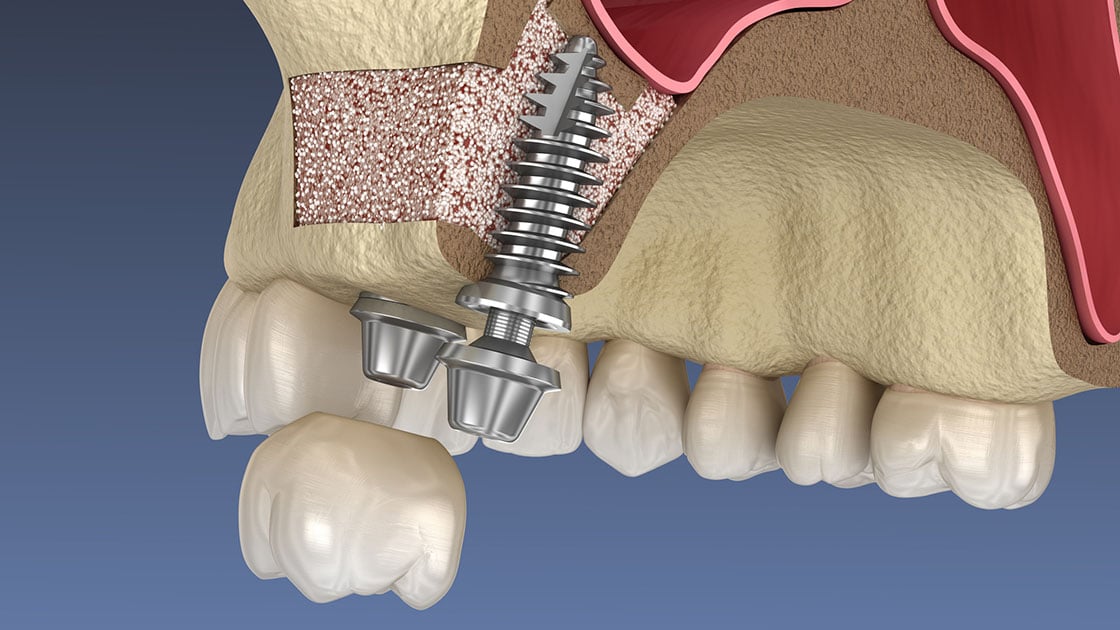Dental Implants
Dental implants are used to replace tooth roots. Implants provide a strong foundation for fixed or removable replacement teeth. Dental implants are small anchors made of biocompatible metal, called titanium, placed in the jawbone. The anchors begin to fuse with the bone over a few months. After the fusing process, known as osseointegration, abutment posts are inserted into the anchors to allow for the attachment of the replacement teeth. To fabricate the replacement teeth, an impression is taken and a model of the bite is created. The replacement teeth are based on this model. Replacement teeth can either be crowns, bridges, or dentures.
Wisdom Tooth Removal (3rd Molars)
A wisdom tooth that is deemed problematic is normally extracted to avoid any oral complications. To have a wisdom tooth removed, a small incision is made to open up the gum tissue over the tooth and remove any bone that is covering the tooth. Once the tooth is in view, it is grasped with a dental instrument, known as a forcep, and gently rocked back and forth to loosen it from the jaw bone and surrounding ligaments. Sometimes the tooth may need to be cut into smaller pieces to make it easier for removal. Stitches may be necessary after the removal of a wisdom tooth.
Bone Grafting
Bone grafting is the replacement or enhancement of bone around teeth. When a tooth is lost, the surrounding bone collapses. Bone grafting is performed to reverse bone loss or enhance existing bone. The grafting material can be taken from parts of the body or from synthetic material. Bone grafting allows for proper support of dental implants or prostheses.
Impacted Tooth & Tooth Exposure
An impacted tooth is a tooth that fails to fully pass through the gums.
Impacted wisdom and cuspid (or canine) teeth are fairly common. To correct impacted teeth, there are a few treatment options. For impacted wisdom teeth, the most common procedure is extraction. For impacted canine teeth, several treatment modalities are available. Orthodontics (braces) can be used to open space for proper eruption. Primary (baby) teeth can either be extracted or surgically exposed to allow for the placement of an orthodontic bracket to help align the teeth.
Orthognathic Surgery
Orthognathic surgery is done to correct misalignments or other abnormalities in the upper and/or lower jaw.
Orthognathic surgery can involve procedures such as an osteotomy (bone cutting), bone grafts, or distraction osteogenesis (stretching of the bone), and orthodontic (braces) care. Orthognathic correction is conducted in stages, and the course of treatment can last from a few months to a year or more.
In order to perform the procedure successfully, the jawbones will be repositioned in accordance with one’s specific needs. Inconspicuous incisions are usually made inside, and if needed, outside the mouth to allow for surgical plates, screws, wires, and rubber bands to be used to hold your jaws in their new positions.
Labial or Lingual Frenectomies
A frenectomy is a simple surgical procedure performed to release the connection of the “frenum,” a connective muscle between two tissues. There are two types of oral frenectomies that are frequently performed on both adults and children for a variety of reasons.
A Labial Frenectomy is performed on the tissue that connects the lip to the gums. This may be performed on children or adults to aid with orthodontic treatment or even help with the proper fitting for a denture or appliance.
A Lingual Frenectomy may also be referred to as the release of tongue-ties (ankyloglossia). This procedure is performed on the connective tissue under the tongue. The procedure is often performed on neonatal patients to assist with nursing or on toddlers or older patients who need the surgery to help correct speech issues caused by limited movement due to the frenum.
Sinus Lift
A sinus lift is a surgery that adds bone to your upper jaw in the premolar and molar areas of your mouth. To add bone, an incision is made where the premolar and molar teeth were previously located. Once the bone is exposed, a small circular shape is made in the bone to access the sinus. Once the sinus is accessed, the sinus membrane is gently pushed up and away from the upper jaw. Once this is done, bone graft material is placed into the sinus space to change the shape and provide support. Once the bone is in place, the incision is closed and the healing process begins.
Cleft Lip & Palate
Cleft lip is an opening or split in the upper lip, and cleft palate refers to an opening or split in the roof of the mouth (palate). Cleft lip and cleft palate result when these developing facial structures in an unborn baby do not close completely.
A series of surgeries can restore normal function and achieve a more normal appearance with minimal scarring.
A cleft lip is usually repaired between the ages of 3 to 6 months. Some children require a lip adhesion or a device such as a molding plate to bring the parts closer together before the full lip repair. A child with a repaired cleft lip will have a scar on the lip under the nose.
A cleft palate is usually repaired between 9 and 12 months of age. To repair the palate, the soft palate muscles from each side are connected to each other and the normal barrier between the mouth and nose is created.
Additional surgeries are needed to improve the appearance of the lip and nose, close the opening between the mouth and nose, help with breathing, and stabilize and realign the jaw. Once the patient’s permanent teeth grow in, braces are often needed to straighten the teeth.
Corrective Jaw Surgery
Orthognathic surgery is done to correct misalignments or other abnormalities in the upper and/or lower jaw. The surgery is performed to improve function and can specifically address problems with breathing, occlusion (bite) and chewing ability, and/or speaking that are due to poor jaw or tooth alignment. The surgery often dramatically affects appearance as well, although this is usually not the primary reason the surgery is performed.
Orthognathic surgery can involve procedures such as an osteotomy (bone cutting), bone grafts, distraction osteogenesis (stretching of the bone), and orthodontic (braces) care. Orthognathic correction is conducted in stages, and the course of treatment can last from a few months to a year or more.
In order to perform the procedure successfully, the jaw bone(s) will be repositioned in accordance with the patient’s specific needs. Inconspicuous incisions are typically made inside the mouth in order to achieve the best aesthetic and functional results.
Dentoalveolar Surgery
The term dentoalveolar refers to the teeth and the alveolar bone that supports the teeth. Surgery involving the dentoalveolar area is the basis for much of oral and maxillofacial surgery. Dentoalveolar procedures simple procedures, such as simple extractions to much more complex procedures. Often, a combination of procedures requiring extraction, modification to the bone, and/or modification of the gum tissue surrounding the surgical site are included in a dentoalveolar surgery.
Dentoalveolar procedures may include a combination of the following:
- Partial or full tooth extraction
- Removal of bone material
- Reshaping of bone material
- Soft tissue removal
- Soft tissue repair
Gingival (Gum) Grafting
If gum recession is present and tooth roots are exposed, a gum graft may be recommended. This procedure is used to control and prevent further gum recession and subsequent damage to the surrounding teeth and bone structure. Often, a soft tissue graft also improves the appearance of a patient’s smile and sensitivity to heat and cold.
During a soft-tissue graft, tissue is surgically placed to cover as much of the exposed root area as possible. Often, a tissue flap is created to allow the added tissue to be joined to the existing gums to facilitate tissue growth and healing. This procedure may be used to treat one or several adjacent teeth at the time of the surgery.
Nerve Injuries
Nerve injury can sometimes result from routine or complex procedures, such as root canals, wisdom tooth removal, or the placement of prosthetic jaws. When this happens, the patient will experience decreased or changed sensation in their mouth, tongue, or face. Many times these symptoms are temporary and the nerve damage will heal over time. There are times, however, when surgical intervention is necessary and it is important to have our doctors assess and monitor any possible signs of nerve damage to determine when and if surgical treatment is necessary. Most times, the majority of natural sensation will return, although it can sometimes take longer than expected.
Pre-Prosthetic Surgery
There are certain clinical circumstances in which oral surgery procedures will be necessary to help prepare for or facilitate the prosthetic phase of patient treatment. These procedures may include either hard or soft tissue surgery, or even a combination of the two.
Because a denture rests on the jaw bone, it is important to match the shape and size to a new prosthesis. For a comfortable fit, bone may need to be smoothed, reshaped or removed before other dental procedures. Your surgeon will consult with you to determine your specific needs.
Additional Procedures
Facial trauma involves injuries to the bone, teeth, skin, gums, or other soft tissues.
Depending on the type of facial trauma sustained, there are many different treatment options available. The primary goals of treatment are to stop any bleeding from occurring, create a clear airway, repair any broken or fractured bone, and or suture any damaged soft tissue. Treatment is immediate, as long as there are no neck fractures or life-threatening injuries.
Oral pathology encompasses oral disease, its causes, and its effects. Oral diseases have a number of causes, including biological, chemical, or physical agents or hormonal or developmental changes.
The smooth, pink skin lining the mouth is called mucosa. Abnormalities in the color or texture of this skin can sometimes indicate pathology. Any concerns with the skin in the mouth, a sore that is not healing properly or a lump on the inside of the cheeks, palate, gums or lips, may merit a biopsy so that the tissue sample can be tested for oral cancer. Please do not ignore these warning signs and be sure to mention any concerns you may have during your visit.
Adequate bone volume of the jawbone is necessary for the secure placement, stability, function, aesthetics, and longevity of implants. Because tooth loss can result in diminished bone volume in the jawbone, a bone expansion procedure may be necessary prior to implant placement. This procedure can increase the height and/or width of the jaw ridge through the use of mechanical manipulation combined with a bone graft. The Ridge Expansion takes several months to mature and be sufficiently strong for the placement of implants. Ridge Expansion not only improves the function of implants but is also a key contributor to the enhanced aesthetics, filling in the face around the gums and jaw and thus minimizing the appearance of aging.
The temporomandibular joint (TMJ) is similar to a sliding hinge that connects your jawbone to your skull. TMJ disorders can cause pain in the jaw joint and in the muscles that control jaw movement.
To treat TMJ disorders, first the cause has to be identified. Improper alignment due to genetics or injury, arthritis affecting the cartilage in the joint, malocclusion, and trauma can all cause TMJ disorders.
Sleep apnea is a disorder in which one experiences one or more pauses in breathing or shallow breaths while you sleep.
Sleep apnea is an ongoing condition that disrupts sleep. When breathing is paused or becomes shallow, one will often move out of deep sleep and into light sleep, making the quality of sleep poor.
Sleep apnea can be treated with lifestyle changes, mouthpieces, breathing devices, and/or surgery.
For mild sleep apnea, a custom-fitted mouthpiece or some lifestyle changes (weight loss, smoking cessation, clearing nasal passages) may be helpful.
For moderate to severe sleep apnea, a breathing device called CPAP (continuous positive airway pressure) or surgery to widen the breathing passages by shrinking, stiffening, or removing excess tissue in the mouth and throat or resetting the lower jaw may be helpful. A CPAP machine uses a mask that fits over your mouth and/or nose and gently blows air into your throat. This air pressure helps keep your airway open while you sleep. Surgery to shrink the tissue involves a small shot into the breathing passages. Surgery to stiffen excess tissue requires a small incision in the tissue and the insertion of a piece of stiff plastic.
Facial cosmetic surgery is performed to correct physical malformations of the face.
The following are some of the facial cosmetic surgeries performed:
- Cheekbone Implants
- Chin Surgery
- Ear Surgery
- Eyelid Surgery
- Facelift
- Facial and Neck
- Liposuction
- Forehead/Brow Lift
- Lip Enhancement
- Nasal Reconstruction
A tooth that can not be saved with restorative materials may need to be removed. First, the area will be numbed with anesthesia. The tooth is then loosened with a special dental instrument known as an elevator. After the tooth is loosened from the socket, it is removed. Stitches may be necessary after the removal of a tooth.
An apicoectomy is a root tip surgery. This procedure is performed to remove a tooth’s root tip to prevent further infection of the root. First, a small incision is made in the gum and bone over the tooth’s root. After the root tip is accessed, it is cleaned and sealed with a small filling. The gum is then stitched back into place.
Gum reshaping or contouring is a procedure performed to reshape the gums if they rest too low or too high on your teeth. In order to reshape the gum tissue, a line is drawn to mark the new gum line. Once approved, anesthesia is applied to the area and the contouring begins. A dental instrument (typically a scalpel or laser) is used to reshape the gum tissue and trim away any extra tissue overhanging the tooth.
Nerve repositioning may be an option for patients whose inferior alveolar nerves, located near the lower molars, are in the path of a potential implant. Nerve repositioning is most frequently needed when there is insufficient bone height at the desired implant site. This procedure moves the nerve out of the way of the potential implant, allowing for optimal positioning of the implant.
Socket preservation is a procedure performed after an extraction to reduce bone loss. Bone grafting material or bone growth enhancing elements are placed in the socket where the extracted tooth was to prevent resorption of bone.
Distraction osteogenesis is a procedure performed in reconstructive surgeries to correct skeletal deformities that could result in health problems. Distraction osteogenesis is the process by which bone is surgically cut and then slowly separated at a controlled rate over the course of several days. This slow separation combined with the bone healing process allows new bone to fill in the gap created by the cut.
Specialized Techniques
Platelet Rich Growth Factors and Platelet Rich Fibrin are a form of mixed gel that can be applied directly into tooth sockets and other sites. Placing this material in tooth sockets after tooth extractions can improve soft tissue healing and positively influence bone regeneration.
These techniques offer a new approach to tissue regeneration. PRP derives from the centrifugation of a patient’s own blood and contains growth factors that influence wound healing. This is important in tissue repairing mechanisms. The use of PRP in surgical practice could have beneficial outcomes, reducing bleeding and enhancing soft tissue healing and bone regeneration.
Dental laser surgery uses a beam of intense light to correct dental problems. The energy produced by the laser cuts or vaporizes the tissue it is concentrated on. Laser surgery often means less discomfort, an easier and quicker recovery time and fewer, shorter appointments.
Lasers have several uses for dental surgery. Some common types of dental laser surgery include but are not limited to: dental cavities, root canals, gum surgery, dental abscess, biopsy, and treatment of lesions.
BMP is a growth factor used to stimulate bone growth. It can be used to combat jaw bone resorption or supplement bone to accommodate an implant.














